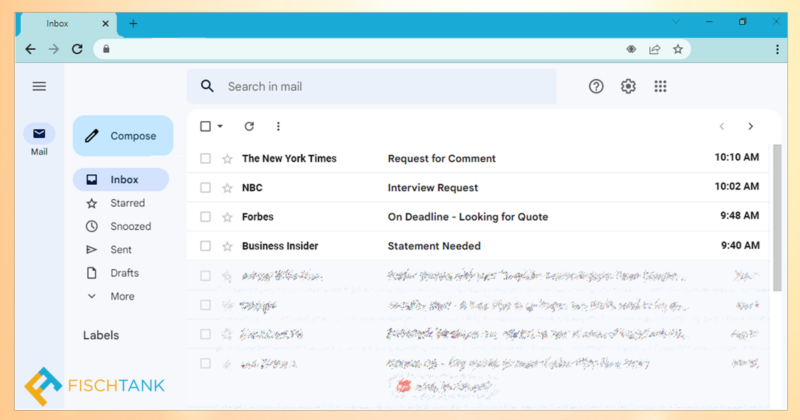B2B crisis communications have changed so much over the past decade or two. Crisis comms lessons during my time at THE Shippensburg University focused mostly on the physical environment. How to hold a press conference. Where to build a media tent. In 2004, I doubt much of that course touched on the Internet. And it definitely didn’t address social media or online reviews.
So yes, times have changed. Now, the need for b2b crisis communications preparation and capability is even more urgent.
Hate it or love it, companies and their leadership are constantly being called out in public forums by their customers, employees, investors, celebrity personalities and the media. Misinformation is at its most abundant. Small news mentions and social feedback can snowball into significant problems. Elon Musk and his bizarre Twitter takeover has shown us that no matter who you are, you are subject to the public’s judgement.
But, most of us don’t have 115 million Twitter followers! So, how should brands prepare and execute effective B2B crisis communications? A few tips:
- Finalize your internal process and keep your circle tight. It’s one thing to be caught by surprise when something happens, and it’s another to be caught unprepared. Don’t be the latter. Establish simple processes to make sure you don’t mess this up: Who is monitoring and has access to your social networks? Who manages your website? Who answers your phones and checks your voicemails? Who is your spokesperson? Who disseminates information internally? These are critical questions that all organizations should take the time to determine up front before a crisis happens. But, most important…
…you must establish an inner circle, and you must keep it tight. A PR crisis is an emotional event. It’s tempting for someone to send an email to eight, 10 or even 20 colleagues, board members and other people in their network. What happens when you get 20 emotional people together in one place? Nothing good. Keep it very short – principals and/or the day-to-day decision-maker or two, a communications professional or PR firm, and perhaps anyone who leads customer/client/investor facing relations. Sure, maybe an attorney as well.
But keep it small! There is nothing worse than having too many cooks in the kitchen when you need to move quickly. - Always Be Monitoring. The best way to execute effective B2B crisis communications is to see the drama coming. The best way to do see the drama coming is to monitor effectively. This means reviewing social chatter, Google search over the past 24 hours, review platforms and incoming emails or calls. Some companies are large enough to hire firms and individuals to do these things, others must assign those roles to existing team members. Bottom line, someone needs to be searching for brand mentions every day – not waiting for an automated monthly report. This way, if they see a difficult conversation or news piece bubbling up, the team can begin executing its crisis comms strategy in real time.
- Don’t wait. He/she who hesitates is lost (and also is likely to experience a more negative backlash). If journalists reach out to you, it’s important to respond in a timely manner. Even if just to acknowledge the message, it’s important to show transparency and that you’re paying attention. Most reporters will give a deadline before running a breaking news piece. Ask for that up front.
Similarly, if there is growing noise on social media, consider issuing a statement. Sure, there are some things that are too sensitive and require legal oversight, but don’t let misinformation continue to spread without addressing. Overall, the quicker you address a crisis, the quicker it goes away. As long as you… - …don’t spin. I really dislike using that word. Spin Sucks (good read for all PR pros, by Gina Dietrich), and you should avoid using that phrasing internally or externally.
Instead, focus on how to move past an issue by being transparent and informative. If you do these two things, you are much more likely to escape serious or long-term harm. If you’ve been wrongfully maligned – which does happen – share data, insights or proof to the contrary. Show the facts and answer questions directly.
Of course, maybe your company or one of its employees did something bad. In that instance, show remorse and take steps internally or externally to address it. Speak to customers, community leaders, etc. Own it, and the story is more likely to slowly wind down with little fanfare. Exacerbate it, and bad things may happen. - As your crisis winds down, be proactive (not spammy). Fortunately for your brand, today’s internet and media culture are designed to focus briefly on one corporate drama before moving onto the next issue. If you follow the steps above, your time in the fire could be short.
But a B2B communications crisis can have long lasting ramifications, especially online, if you don’t put your neck (and brand) out there a bit. Consider publishing content in blog posts, press releases or op-eds. Not about your crisis of course, but about your business and employees. Share insights. Highlight growth. Use social media platforms like LinkedIn, Twitter and Facebook to showcase your work and employees. Hire a PR firm and engage journalists.
This is simple, right? Don’t be caught by surprise, have your house in order, don’t try to BS the world, and be proud of your brand. Do this and you’ll be remembered for what you represent, not yesterday’s news.




